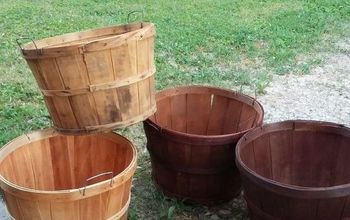Is cooling outside AC coils with city potable water cost effective?
Related Discussions
How to get rid of mice?
We seem to have some unwelcome Mickeys and Minnies in our house. What is the best way to get rid of them?
How to remove popcorn ceiling with asbestos?
I want to remove my popcorn ceiling, but it has asbestos in it. How do I go about this safely?
How to caulk baseboard gaps?
How do I fill gaps at baseboard, should I caulk? If so, does anyone know how to caulk baseboards?
How to fix squeaky hardwood floors?
How do I fix squeaky hardwood floors?
What can I do about wood smoke coming into my house?
I need help. My back door neighbor heats with a wood stove all winter. They are downhill from me. Almost all their smoke makes its way into my house, causing headache... See more
A/C question: My outside unit runs, but no air is being pushed through the vents in the house.
It has been about a year since my last tune up, and I am wondering if a tuneup might be all I need, in order to avoid a service call and diagnostic fee and any other ... See more




Hi Maria, Here's a link that may help! http://www.greenbuildingadvisor.com/articles/dept/building-science/spraying-mist-your-air-conditioner-answer-high-bills
Good luck!
How hot is it where you live and does the unit itself sit in full sun all day? For me, personally this is not viable due to water consumption issues as it would be running constantly for months on end. Now that being said, I do hose mine off every other day to keep it as clean as possible. A modern, newer unit that is properly serviced should not need this.
That concept is based on the old "salamader" AC systems once used and possibly still are in the southwest. Also skyscrapers use a similar system with cooling towers. Water is circulated and sprayed over the coils to assist in cooling them down. They don't use fresh water. Water is stored and pumped to the top of the coils cooling them. When water levels get low in storage floats allow fresh water to be introduced to level. In theory the misting system is viable but impurities in the water can break down the aluminum fins, copper tubing, and a build up of calcium deposits over time. In my opinion it really doesn't work unless water is running over the coils during a complete cooling cycle. The fan in the AC unit still runs to cool the coils even after the compressor shuts down. Not to mention the water and power cost. Keeping the coils clear and clean like Naomie suggests is a necessity, Once a week would be fine unless conditions around the unit require more.
I used a Mr. Mister on our last heat pump for cooling in summer here in FL. Worked very well. Compressor died of old age so had a whole new system installed. I asked about using this mister & was told not to b/c minerals will build up on the coils and lower the efficiency. Plus, it would void my 10 yr warranty. if you're out of warranty, it may be worth getting. The water absorbs heat from the coils making the heat transfer more efficient. Once the 10 yrs is up, I'm totally going back to this system. I paid about $100 for mine. By the time the minerals do have a significant buildup, this unit will have died of old age!